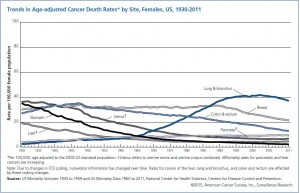American Patients Have Much, Much Greater Access to New Cancer Drugs Than Others Do
 New research by scholars at the University of Pittsburgh shows how much better access American patients have to new cancer medicines than their peers in other developed countries:
New research by scholars at the University of Pittsburgh shows how much better access American patients have to new cancer medicines than their peers in other developed countries:
Of 45 anticancer drug indications approved in the United States between January 1, 2009, and December 31, 2013, 64% (29) were approved by the European Medicines Agency; 76% (34) were approved in Canada; and 71% (32) were approved in Australia between January 1, 2009, and June 30, 2014. The U.S. Medicare program covered all 45 drug indications; the United Kingdom covered 72% (21) of those approved in Europe— only 47% (21) of the drug indications covered by Medicare. Canada and France covered 33% (15) and 42% (19) of the drug indications covered by Medicare, respectively, and Australia was the most restrictive country, covering only 31% (14).
(Y. Zhang, et al., “Comparing the Approval and Coverage Decisions of New Oncology Drugs in the United States and Other Selected Countries,” Journal of Managed Care and Specialty Pharmacy, 2017 Feb;23(2):247-254.)







